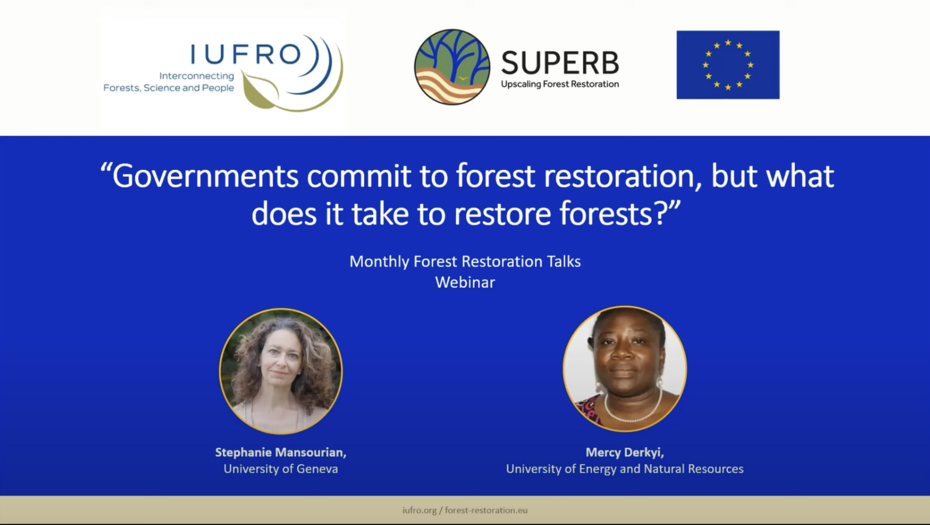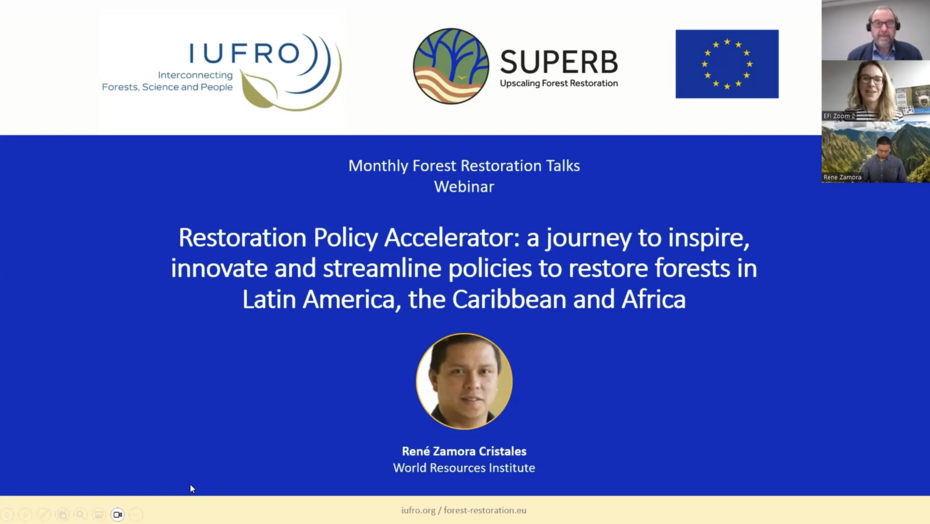
2.1 Policy (in-)coherence

Forest-related policies in Europe often have partly conflicting goals, varying levels of legal obligation, and overlapping institutional responsibilities. This makes it difficult to ensure that their combined effects on forests and forest management are consistent. Achieving such coherence is crucial for sustainable and effective forest governance, especially if policies are to be widely accepted and understood by forest owners and managers. However, ongoing disagreements between EU institutions about who holds responsibility for forest policy have led to conflicting priorities and objectives across different policy areas. This has created inconsistencies – for example, subsidies at the EU and national level that work against ecological sustainability, differences between countries in regulating intensive forestry practices (such as clearcutting or deadwood management), and power imbalances among forest-related institutions.
At EU level, forest restoration goals are coherently addressed in EU nature protection and climate policies, laws and strategies. This includes the long-established EU Habitats and Birds Directives, the new EU Nature Restoration Regulation, the revised EU LULUCF Regulation, as well as the EU Forest Strategy and Biodiversity Strategy. However, potential incoherences exist with EU-level forest-related policy areas promoting a more intensive form of forest management, such as under the EU Renewable Directive and EU Bioeconomy policy.
At the national level, the variety of domestic policies, laws and strategies comes with a great diversity of the number, coverage, and types of policy instruments with relevance for forest restoration. For example, national forest laws often cover key forest restoration indicators and ecological management practices only partly, or not at all, and sometimes even work against them. This creates a gap with the requirements of the EU Nature Restoration Regulation and the EU Nature Directives, which call for measures such as deadwood, native tree species, uneven-aged forests, forest birds, and forest set-asides. Where covered, national forest laws hardly contain any quantifiable targets of some of the key ecological indicators and practices (e.g., deadwood, tree species diversity). For other key ecosystem indicators (e.g. forest birds, soil carbon, uneven-aged forests), regulatory gaps remain in the national forest laws. Last, but not last, many national forest laws contain a range of legal obligations (e.g., no/little restrictions on clearcutting, mandatory obligations on short-term reforestations) that regulate against these key ecological indicators and practices. These are hence incoherent with the EU nature restoration policy and legal framework.
In their assessments of policy conflicts across sectors and levels experts raise concerns about the incompatibility between forest use and forest restoration objectives and practice-oriented standards among EU sectoral policies, and between EU environmental policies and national forest laws. Such concerns seem to stem from perceptions or evidence that forest restoration would lead to extensification of forest management (e.g., deadwood), or even a complete set-aside of forest ecosystems. This would result into reduced timber harvesting availability and hence to socio-economic disadvantages over the short to long term. At the same time, there is competing perception and evidence that nature-based forest objectives and practices supporting forest restoration (e.g. close-to-nature forest management; conservation management of forests, climate adaptation of forests) can significantly reduce economic risks and offer benefits for forest owners, industries and society at large. Therefore, to support the implementation of forest restoration policies at EU and national level in the coming years, it will be crucial to align seemingly conflicting economic and ecological perceptions and policy priorities as well as to provide evidence that can show real or potential socio-economic benefits of forest restoration alongside its primary biodiversity and climate benefits.
Ensuring the effective implementation of forest restoration in Europe - including the ambitious targets set by the EU Nature Restoration Regulation (EU-NRR) - will critically depend on addressing potential trade-offs across forest-related policy areas and leveraging existing synergies. In this context, it is important to understand how political, societal, technological, and economic developments have historically influenced policy coherence. Such insights can help design and implement more coherent and effective forest policy instruments across political levels and EU Member States in the years ahead.
Related resources
Governments commit to forest restoration. But how to scale it up?
This webinar features Stephanie Mansourian, Environmental Consultant at Mansourian.org, and Mercy Derkyi, Senior Lecturer at the University of Energy and Natural Resources. Our speakers look at enabling factors to scale up Forest Landscape Restoration with emphasis on its governance dimensions, such as decision-making rules, structures ad processes involved in restoring forest landscapes.
A journey to inspire, innovate and streamline restoration policies
This SUPERB/IUFRO Forest Restoration Talk features René Zamora Cristales, Senior Manager and Restoration Policy & Forest Economist at the World Resources Institute. In the webinar, he explains how WRI's Restoration Policy Accelerator is contributing to the restoration of 50 million hectares in Latin America and the Caribbean and 100 million hectares in Africa.
The role of forests in EU environmental politics
This study it provides valuable insights into the development of the EU-NRR—the EU's first directly applicable and legally binding forest-related policy instrument.






